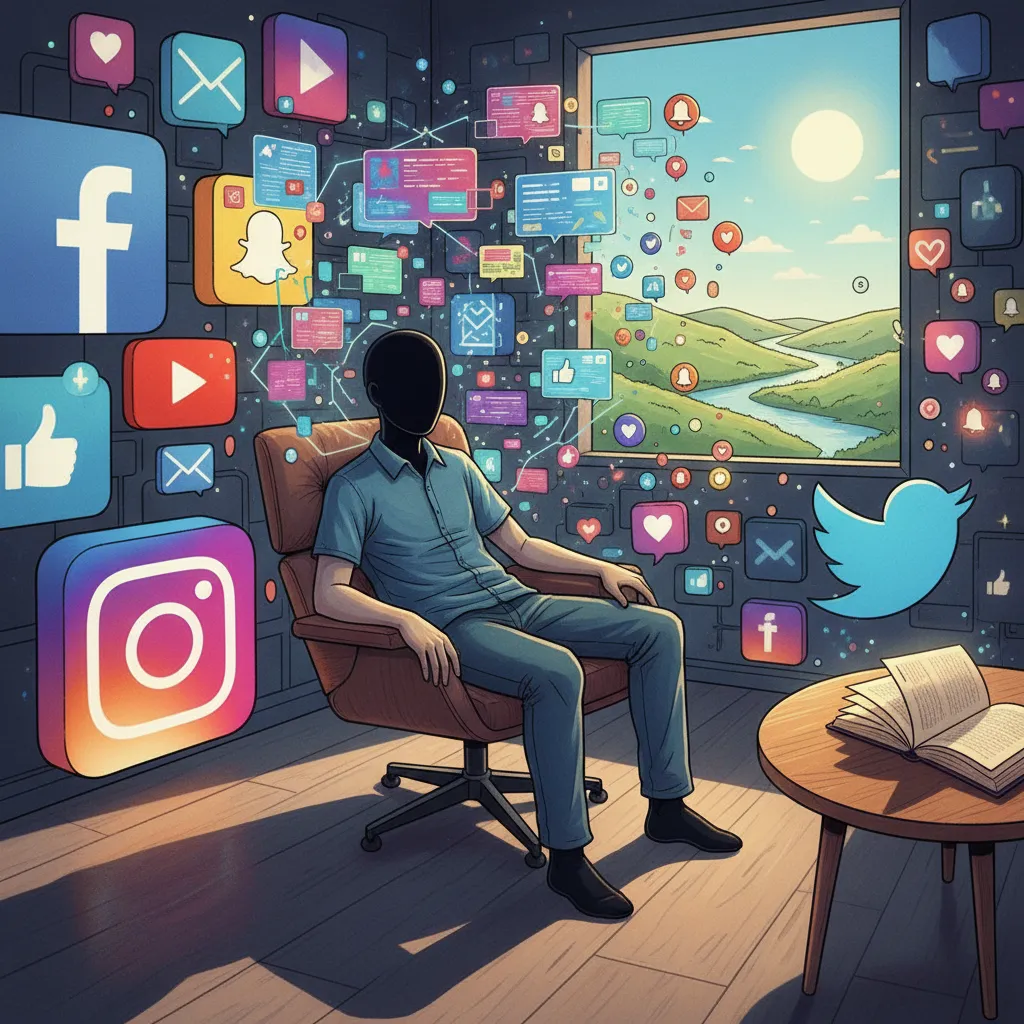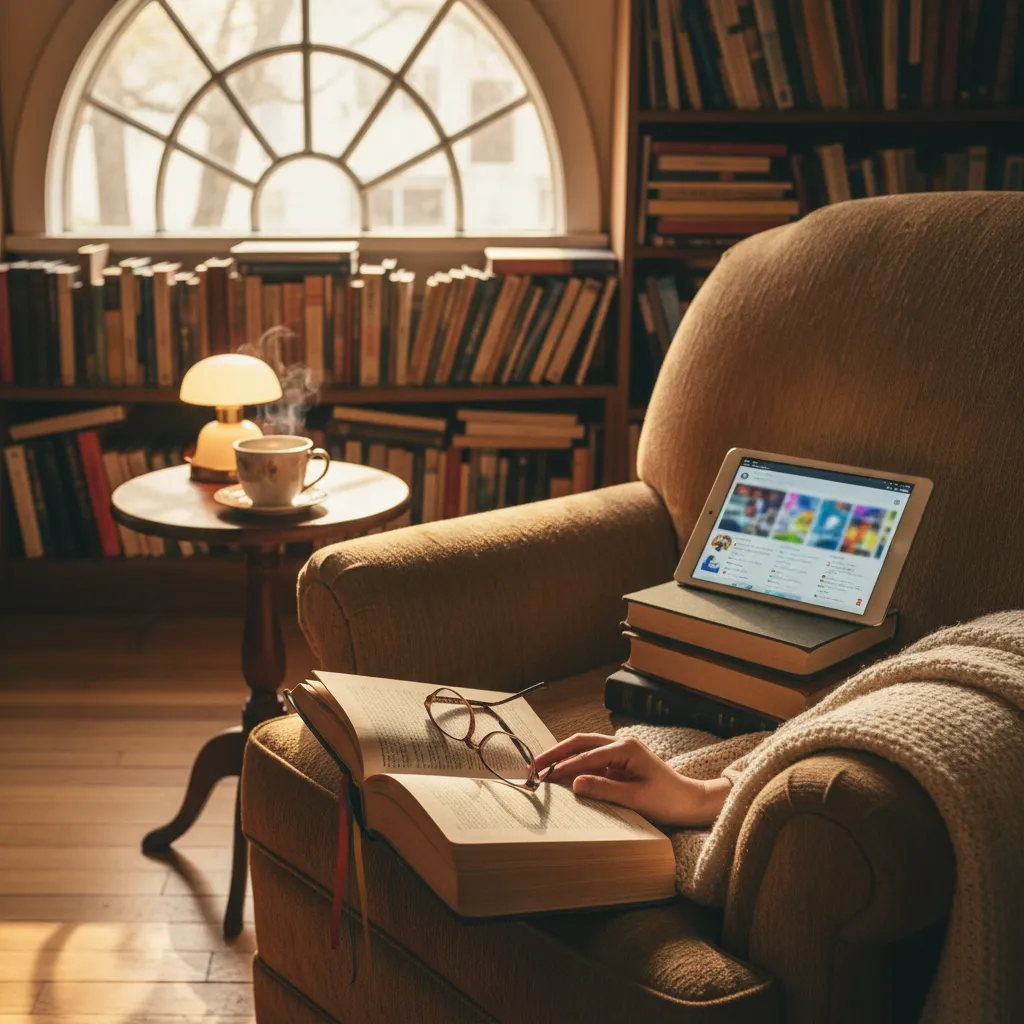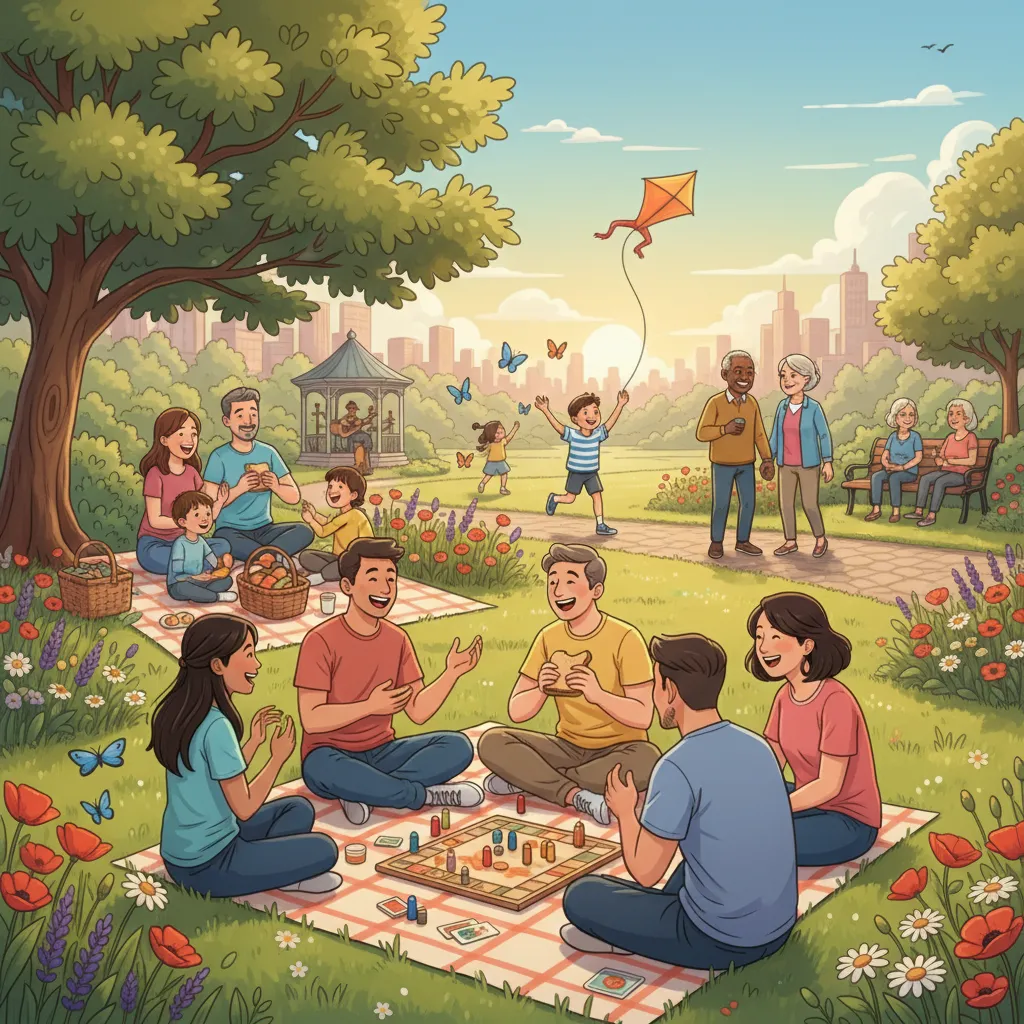There’s a running joke in my family that I was tweeting before I could walk—somehow simultaneously a grandma and an early adopter of social media. But here’s the wildest thing: despite years in marketing (and the fact my diploma pre-dates hashtags), I kept wondering—am I actually happier in this always-online world? One day, after catching myself tallying up eight hours (!) of daily screen time (hey, some of it’s work…right?), I decided to flip the script. Not with a dramatic digital detox—more like a scruffy experiment in adding little joys back into my day. Spoiler: it wasn’t nearly as polished as those wellness gurus make it look, but it gave me real, surprising insights to share.
Why Social Media Makes Us Grumpy (and Why We Still Can’t Quit)
Let’s be honest: you probably know what it feels like to scroll through your feed late at night, even when you promised yourself you’d go to bed early. You’re not alone. According to recent social media addiction statistics, a whopping 88% of working Americans believe you can get addicted to social media. If you’ve ever caught yourself doomscrolling into the early hours, you’re in good company.
But here’s where it gets interesting: while only about half of people surveyed say social media makes them less happy, 63% believe these platforms are designed to mess with your emotions. That’s right—most of us suspect that social media is engineered to keep us hooked, even if it doesn’t always make us feel good. It’s not just a feeling; it’s a fact supported by research into the mental health effects of social media addiction.
Social Comparison: The Trap You Can’t Escape
One of the biggest reasons social media makes us grumpy is the endless cycle of social comparison. You see someone’s vacation photos, their new job announcement, or their perfectly curated dinner, and suddenly your own life feels a little less exciting. I know I’ve been there—after too much scrolling, my own negative self-talk ticker runs wild. It’s not just hype. As one user put it:
Social media increases my need to compare myself to others... and my negative news ticker is running regularly.
This constant comparison isn’t just annoying—it’s linked to real mental health issues. Studies show that frequent social media users are more likely to experience depression, anxiety, and loneliness. In fact, adolescents who spend more than five hours a day on social media are three times more likely to be depressed than those who don’t use it at all.
The Science Behind the Scroll
Why do we keep coming back, even when we know it’s making us unhappy? The answer lies in how social media platforms are built. About 63% of people believe these apps are intentionally designed to trigger emotional responses. Every like, comment, or notification gives your brain a tiny hit of dopamine—the same chemical involved in other types of addiction. Over time, you start to crave these small rewards, even if they come with a side of anxiety or insomnia.
- Social media addiction is widely recognized: 88% of working Americans believe it’s real.
- Only 50% feel less happy using social media, but 63% think platforms are engineered for emotional manipulation.
- Prolonged use leads to social comparison, depression, anxiety, and sleep trouble.
So, why can’t we quit? Because social media taps into our basic need for connection and validation—even if it sometimes leaves us feeling worse. The cycle of comparison, feedback, and reward is hard to break, especially when everyone else is still scrolling.

Reading Books Instead of Feeds: Why Paper Beats Pixels
When you swap your phone for a physical book, you do more than just reduce your screen time—you rewire your downtime. This simple monthly experiment of carrying a book everywhere, from the carpool lane to the waiting room, transforms idle moments into opportunities for true relaxation and mindfulness. Instead of reaching for your phone to scroll through endless feeds, you reach for a story, a new idea, or a moment of escape. The benefits of reading, especially reading physical books, go far beyond entertainment—they help you reclaim your attention, lower your stress, and reconnect with yourself.
Carrying a Book: The Ultimate Screen Time Reduction Hack
It might sound old-fashioned, but keeping a library card handy and a paperback in your bag is a powerful tool for screen time reduction. The author’s experiment began by making sure a book was always within reach—just like her phone. Whether waiting in the car, at the doctor’s office, or for a meeting to start, having a book made it easy to choose reading over scrolling. This small habit shift led to reading five or six physical books a month—her personal best since childhood summers. That’s a significant boost in the benefits of reading and a major win for mindfulness digital consumption.
Surprise: Fiction Books Offer Real Relaxation
Many of us gravitate toward non-fiction, always looking for ways to improve our business, parenting, or personal lives. But as the author discovered, reading fiction delivers a different kind of self-care. She shares,
“When I was reading fiction books, I felt less stressed... and I didn’t give myself that kind of self-care before.”Research backs this up: swapping digital feeds for analog leisure, like fiction, directly lowers stress and provides a mental break from the constant “how do I improve?” pressure. Fiction books offer top-tier escapism, helping you relax in a way that endless self-help reading or social media never can.
Paper Over Pixels: Books Beat Movies and Feeds for Stress Relief
Remember the days of Siskel & Ebert, when critiquing movies seemed like the dream job? The author admits she’d love to watch and review movies for a living, but even her love of film couldn’t compete with the benefits of reading physical books. She noticed that bringing a book on flights led to less time watching movies and more time immersed in a story. This unexpected side effect of her monthly experiment shows how physical books serve as a healthy replacement for idle scrolling—and even movie binges.
Physical Books: Tangible, Mindful, and Effective
- Carrying a book everywhere helps break the habit of compulsive phone checking.
- Physical books offer a tactile, focused experience that digital content can’t match.
- Reading both fiction and non-fiction supports personal growth and stress relief.
- Replacing screen time with reading improves mental wellness and mindfulness.
By making books your go-to for downtime, you’ll find yourself reading more than ever—just like the author, who now gets through five or six physical books a month, plus audiobooks on long trips. This simple shift is one of the most effective ways to decrease screen time and rediscover the joy of analog living.

Nature, Movement, and Actual Human Interaction: The Anti-Scrolling Prescription
When it comes to reducing screen time and rediscovering happiness, few strategies are as effective—or as overlooked—as simply stepping outside. Nature and mental wellness are deeply connected, and even a low-key walk in the park can do more for your mood than the latest viral meme. The fresh air, the sunlight, and the simple act of moving your body all help calm frazzled nerves and reset your mind.
Nature Beats the Feed: Why the Outdoors Wins
Making a commitment to spend more time in nature doesn’t have to mean epic hikes or camping trips. It can be as simple as a daily walk around your neighborhood or a weekly visit to a local park. Personally, I set a goal to exercise outside whenever possible—even if it was just walking. Once a week, I’d intentionally plan something different, like a hike or a stroll through a canyon, to break up the routine of home and office life. This shift made it easier to be present and less tempted to reach for my phone out of boredom.
- Weekly outdoor activity in nature prioritized
- Daily movement goal: 30 minutes minimum
- Aiming for 10,000 steps/day as a personal benchmark
Movement as a Screen-Time Breaker (and Connection Builder)
Physical activity is a proven way to reduce digital cravings and mental strain. But here’s a true confession: not all movement has to be a “sweat and grind” session. Sometimes, it’s dancing while cleaning, taking the dog out, or strolling with a neighbor. The key is to make movement a ritual—something you do daily, regardless of how intense it is. For me, that meant 30 minutes of movement every day, with 10,000 steps as my target. Some days I missed it, but having the goal kept me intentional.
Even better, exercise screen time reduction becomes easier (and more fun) when you invite others. I started reaching out to friends, neighbors, and family to join me for walks or hikes. This “side hustle” of connection-building made movement less of a chore and more of a social event. Sometimes it didn’t work out, and I’d pop in a podcast or some music—but I always tried to carve out at least one group activity each week.
Face-to-Face Interactions: The Real Happiness Hack
Industry research is clear: face-to-face interactions are far more powerful for happiness and emotional resilience than virtual communication. Spending time with people you care about—whether over dinner, on a walk, or during a workout—boosts your sense of purpose and confidence. In fact, “The research actually backs this up—the ways that people connect increase their happiness and decrease digital time.”
Making movement social also helped me avoid the digital comparison trap. Instead of scrolling through highlight reels, I was building real memories with people I love. Social connections happiness isn’t just a buzzword; it’s a proven antidote to the stress and competition fueled by endless feeds.
- Group activity adds accountability and fun—no need to share proof online
- Face-to-face time increases happiness and emotional resilience, even without documentation
Nature, exercise, and in-person connection are the core strategies that helped me reclaim happiness from my devices. The science—and my own experience—show that these habits are the true anti-scrolling prescription.

A Month (Imperfectly) Unplugged: Results, Surprises, and a Mini Roadmap
Let’s be honest: this wasn’t a dramatic, zero-to-hero digital detox. Instead, I set a modest but meaningful goal—reducing screen time by just three hours per day. That meant moving from about eight hours glued to my phone to five. No total blackout, no deleting every app. Just a simple, intentional shift. The real experiment was not just about reducing screen time, but about tracking my emotional well-being and seeing what filled the new gaps in my day.
What happened? The results surprised me. By the end of the month, I noticed a clear boost in happiness. But here’s the twist:
At the end of that month, I was so much happier—not because I wasn’t on my phone, but because of the other things I was doing instead.The joy didn’t come from the absence of digital noise, but from the presence of something else—real, analog experiences. Book club conversations, spontaneous laughter with friends, and even quiet moments outside became the highlights of my days. These old-school joys naturally edged out the cravings for endless scrolling. It turns out, fulfillment isn’t found in the next video or notification, but in the stories, connections, and experiences that happen offline.
One unexpected discovery was how much more grounded I felt when I swapped digital rituals for tangible ones. For example, I moved my religious study and meditation back to physical books. The act of turning pages, feeling the paper, and being away from a glowing screen brought a surprising sense of calm and clarity. Offline rituals like these—whether it’s reading, walking, or sharing a meal—became anchors for my mental wellness. They offered a kind of restoration that no app or feed could replicate.
Here’s a wild card to consider: what if you swapped just half an hour of scrolling each day for a real conversation? Imagine if that simple change could double your happiness. My experience suggests it’s not only possible, but likely. The key isn’t about extreme measures or all-or-nothing thinking. In fact, research shows that intentional, incremental changes in your digital habits yield far greater happiness and resilience than drastic digital detoxes. Screen time reduction works best when it’s custom-fitted to your life, not forced.
If you’re thinking about your own monthly experiment to decrease screen time, start small. Track your mood and notice what offline activities bring you joy. Mindfulness in digital consumption isn’t about guilt or deprivation—it’s about making space for the things that truly matter. You don’t have to give up your phone entirely; just be intentional. Even a few hours reclaimed from your screen can unlock a sense of fulfillment that endless content consumption never will.
In the end, reducing screen time is less about what you lose and more about what you gain. The real reward is rediscovering happiness beyond the scroll—one imperfect, intentional day at a time.
TL;DR: Stepping back from social media doesn’t mean ditching connections—in fact, it might just help you uncover deeper happiness and resilience by weaving in books, nature, and actual hugs (or coffee dates). Small, intentional swaps beat grand digital fasts every time.



